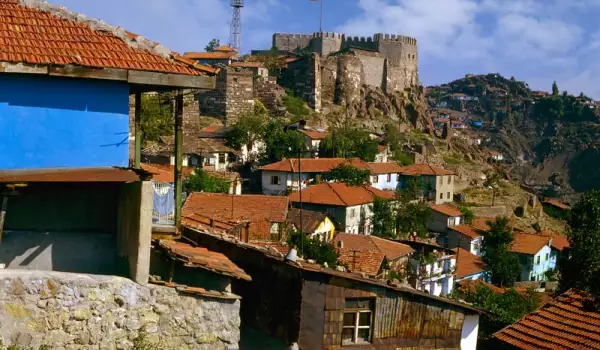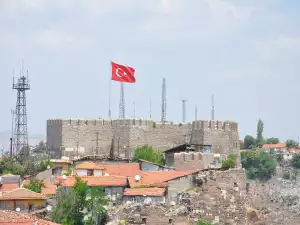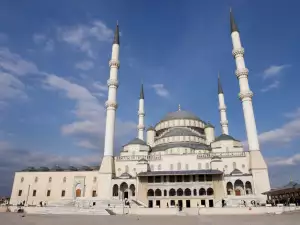Ankara

The multi-million populated metropolis of Turkey is among the most popular places for tourism in the Eastern world. The city is an important political, commercial and industrial center of Turkey, bearing in itself the charm of Asian culture and gender of modernity.
Ankara is known for white rabbits, delicious pears, honey and intoxicating sweet Muscat grapes.
In and around the Turkish capital, there are many remnants of the citadels of the Hittites, Roman and Ottoman times. Two thousand years before Christ, during the Bronze Age, these lands were ruled by the chitin, followed by the Lydians and Persians. The town was founded around the 3rd century AD. by Celtic communities, known as Galatians.
Although the city is on the most arid and rocky areas of Turkey Ankara is considered one of the greenest cities on the planet. The image was created by local authorities, who take care of the many parks and recreation areas in a dynamic city.

Among the biggest attractions of the city is the mausoleum of Mustafa Kemal Anıtkabir - leader of the Turkish War of Independence, the founder and first president of Turkey. The monument of gratitude is erected in 1941 after a competition for a memorial to Anıtkabir. The mausoleum is the most visited landmark in Ankara. Only in the first 11 months of 2007 the magnificent building was visited by 11 million people. According to statistics in the day, which commemorates the anniversary of the Turkish leader (10 November), more than 546 000 people pay homage to Anıtkabir in his mausoleum.

Around the building are granite statues of lions that take visitors to a small square. The mausoleum is one of the emblems of Ankara. Anıtkabir’s remains were laid in the crypt, beneath his monument. In the museum is a museum telling the life and work of the modernizers of modern Turkey.
Curious visitors can enrich their knowledge in the beautiful building of the Museum of Anatolian Civilizations. The State Art and Sculpture Museum is also a frequently visited place by tourists. In the building of this museum is located the Operet Sahnesi.
The Ethnography Museum of Ankara is another place where you can take the time to learn more details about the life and culture of the Turks.
Among the archaeological sites of the city is the Ankara Citadel. In the castle itself many old houses are now crowded by local restaurants that serve local dishes. The remains of the Roman Theatre are also a visited tourist destination. Special attention should be paid to the Roman bath and Column of Julian.
The Turkish capital has many religious shrines. The most attractive of them are the fabulous Alaaddin Mosque, Ahi Elvan Mosque, Hacı Bayram Mosque, Yeni Mosque and Kocatepe Mosque.

Perhaps the most impressive Muslim temple is the Kocatepe Mosque. The building is so fancy, as if straight from the ancient Asian tales. The mosque was built over 20 years (1967-1987). It can be seen from almost any place in Ankara. Its capacity is 12, 500 people. Kocatepe is one of the largest mosques in the world. Built in eclectic modern Islamic architecture style, it consists of four tall minarets and several large domes.
Historically significant buildings of the Turkish capital are the official residence of the President - Cankaya Palace, and the villa of former Turkish President Ismet Inoni (Pink Villa).
There are several impressive monuments in Turkey, among them the Victory Monument, Monument to a Secure, Confident Future, and the Hatti Monument.
There are many commercial buildings, almost every one of which has an interesting architectural design and implementation.
Among the symbols of the city is the tower Atakule, at 125 meters high. On top, the phenomenal building has an open terrace, restaurant and coffee shop called UFO. Under the dome of Atakule is even a mall. Naturally, from the height of the tower extend memorable views of the Turkish capital.
Ankara is the second largest city in Turkey after Istanbul (the distance between two cities is 351 km). The population of the metropolis is around 4.4 million. Ankara is the capital of Turkey since 1923. It is believed that Ankara's name translates to "anchor".
The city is situated in a hilly area in the central part of the extensive Anatolian Plateau. Chubuk river passes through Ankara.







